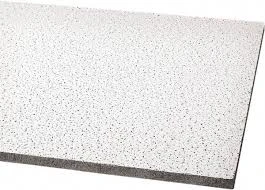- Afrikaans
- Albanian
- Amharic
- Arabic
- Armenian
- Azerbaijani
- Basque
- Belarusian
- Bengali
- Bosnian
- Bulgarian
- Catalan
- Cebuano
- Corsican
- Croatian
- Czech
- Danish
- Dutch
- English
- Esperanto
- Estonian
- French
- German
- Greek
- Hindi
- Indonesian
- irish
- Italian
- Japanese
- Korean
- Lao
- Malay
- Myanmar
- Norwegian
- Norwegian
- Polish
- Portuguese
- Romanian
- Russian
- Serbian
- Spanish
- Swedish
- Thai
- Turkish
- Ukrainian
- Uzbek
- Vietnamese
Nov . 16, 2024 08:57 Back to list
suspended ceiling t grid system
Understanding Suspended Ceiling T Grid Systems
Suspended ceiling T grid systems are essential components in modern interior design and construction, offering a versatile and efficient solution for ceiling construction. These systems are particularly popular in commercial buildings, offices, and various institutional environments, where functionality, aesthetics, and practicality are paramount. This article delves into the structure, benefits, and applications of suspended ceiling T grid systems.
What is a Suspended Ceiling T Grid System?
A suspended ceiling, also known as a drop ceiling or false ceiling, is an overhead ceiling that is not a structural element but rather a secondary ceiling hung from the original ceiling above. The T grid system serves as the framework for the ceiling tiles. This grid is made of metal, typically galvanized steel, and consists of horizontal and vertical main tees and cross tees that form a grid-like structure. It provides support for the ceiling tiles, which can be made of various materials, including mineral fiber, gypsum, or other lightweight materials.
Benefits of Suspended Ceiling T Grid Systems
1. Aesthetic Appeal Suspended ceiling T grid systems allow for a clean and professional appearance. Designers can choose from a range of ceiling tile designs, colors, and finishes, enabling them to align the ceiling with the overall design theme of the space.
2. Acoustic Properties Many ceiling tiles used in conjunction with T grid systems are specifically designed to improve sound absorption. This makes them ideal for settings where noise reduction is crucial, such as offices, classrooms, and auditoriums.
3. Concealment of Utilities These systems efficiently hide ductwork, pipes, and electrical wiring, creating a streamlined look and providing easy access for maintenance. This feature is particularly beneficial in commercial buildings where the visual presentation is essential.
4. Easy Installation and Maintenance The T grid system is relatively easy to install, which significantly reduces labor costs compared to traditional ceiling construction. If a tile needs replacement, it can be easily removed and swapped out without disturbing the surrounding tiles.
suspended ceiling t grid system

5. Energy Efficiency By using reflective tiles or integrating insulation into the ceiling system, suspended ceilings can help in reducing energy costs. The trapped air cavity between the original and suspended ceiling can contribute to better temperature regulation.
Applications of Suspended Ceiling T Grid Systems
Suspended ceiling T grid systems are widely used across various sectors. Here are a few prominent applications
- Commercial Offices In office settings, these systems provide professional aesthetics and enhance audio comfort, which is vital for meetings and collaborative work. The grids allow for varied lighting options, integrating recessed lights or panels seamlessly.
- Healthcare Facilities Hospitals and clinics require clean, sterile environments. These ceiling systems facilitate easy cleaning and maintenance while enabling the installation of necessary utilities without compromising aesthetics.
- Retail Stores Retail environments benefit from diverse tile options to accentuate branding and create engaging atmospheres. The ability to modify lighting and acoustics enhances the shopping experience.
- Educational Institutions Classrooms and lecture halls utilize suspended ceilings to manage sound and improve acoustic quality, aiding in learning and teaching dynamics.
Conclusion
Suspended ceiling T grid systems offer a multitude of advantages, making them a popular choice for modern architectural designs. Their aesthetic flexibility, practicality, and acoustic benefits cater to a wide range of applications, from commercial to educational settings. With the ongoing trends toward open and adaptable work environments, the relevance of suspended ceilings continues to grow, solidifying their place in contemporary construction. Whether you're redesigning a workspace or constructing a new facility, suspended ceiling T grid systems can play a critical role in achieving both functional and stylish designs.
-
Transform Interiors with PVC Gypsum Ceiling: A Stylish, Durable, and Moisture-Resistant SolutionNewsMay.19,2025
-
The Smart Interior Upgrade: Discover the Durability and Versatility of Gypsum Ceiling Access Panel SolutionsNewsMay.19,2025
-
The Smart Choice for Interior Design: Discover the Value of PVC Gypsum Ceiling SolutionsNewsMay.19,2025
-
Mineral Fiber Ceiling Tiles: The Smart Blend of Performance and AestheticsNewsMay.19,2025
-
Mineral Fiber Ceiling Tiles: The Superior Choice Over Gypsum for Sound and Fire SafetyNewsMay.19,2025
-
Mineral Fiber Ceiling Tiles: Eco-Friendly Strength and Style for Every CeilingNewsMay.19,2025







